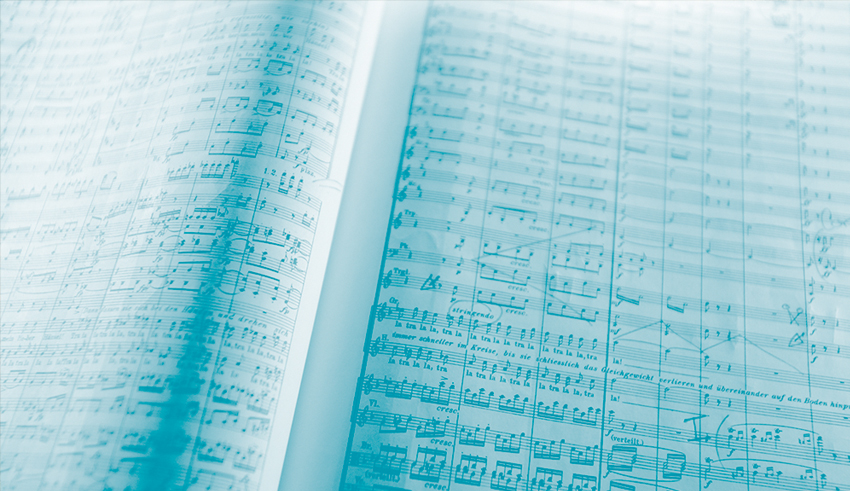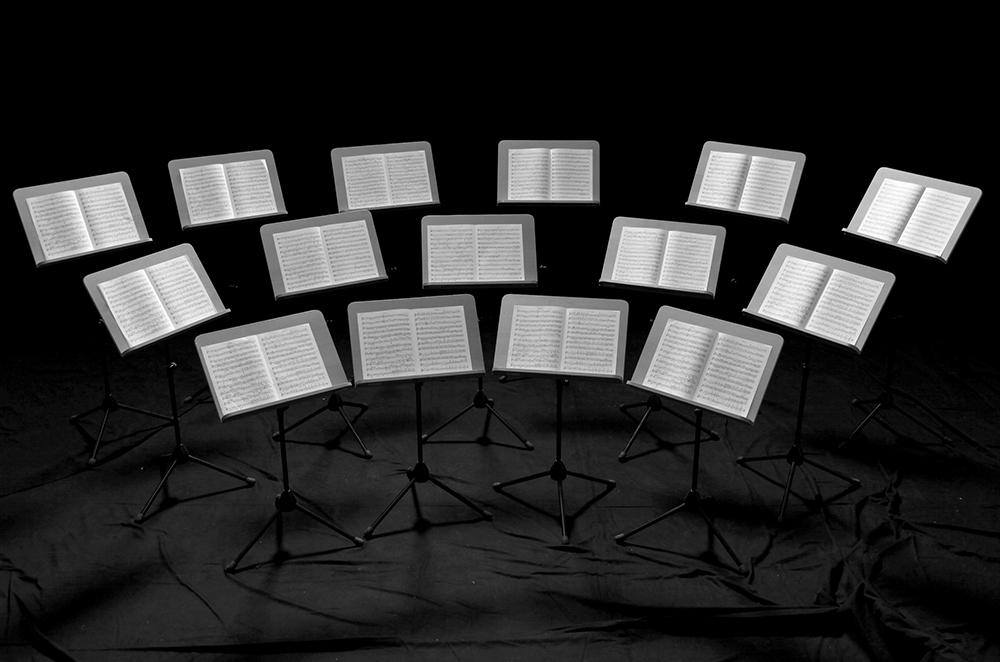Zur Theorie der musikalischen Schrift
Eine interdisziplinäre Ringvorlesung mit KulturwissenschaftlerInnen, MusikwissenschaftlerInnen, PhilosophInnen, KomponistInnen und MusikerInnen widmet sich im kommenden Wintersemester an der mdw dem Phänomen der Musikalischen Schrift.

Der flüchtige Klang und die dauerhafte Schrift
Um zu verhindern, dass sich der Strom der bereits im Erklingen verklingenden Musik unaufhaltsam ins Meer des Vergessens ergießt, wurden bekanntlich in vielen Kulturen Techniken der Fixierung des ephemeren musikalischen Klangs etabliert: Die Geschichte der musikalischen Notation kennt viele Beispiele, die die Archivierung und Weitergabe musikalischen Wissens auch über große raumzeitliche Distanzen hinweg ermöglichen. Erschöpft sich musikalische Schrift – gleichsam als „aufgeschriebener Klang“ – nun jedoch in dieser Rolle des bloßen Speicher- und Kommunikationsmediums?
Schrift als „aufgeschriebene Sprache“?
Ein Blick auf aktuelle Debatten um Schrift und Schriftlichkeit legt nahe, den theoretischen Bogen etwas weiter zu spannen, um den Blick für weitere Perspektiven zu öffnen: Die mit explizitem Rekurs auf Ferdinand de Saussure und implizitem Rückgriff auf Platons Schriftkritik immer wieder gerne zugrunde gelegte Übereinkunft, Schrift sei nicht mehr (und nicht weniger) als „aufgeschriebene Sprache“, ist in der interdisziplinären Diskussion der letzten Jahre recht brüchig geworden. Demgegenüber stellt es nun eine der zentralen Denkfiguren aktueller Schriftforschung dar, dass Schriften Aspekte beinhalten und Möglichkeiten eröffnen, in denen sie sich als unabhängig von der gesprochenen Sprache erweisen und diese gewissermaßen sogar überschreiten können. So kann man große Zahlen unter Zuhilfenahme des Schreibens recht einfach miteinander addieren; man kann in einem geschriebenen Text durch Hervorhebungen, Streichungen, Ergänzungen und Umstellungen Sprache manipulieren; man kann in einer musikalischen Partitur durch entsprechende räumliche Anordnung beispielsweise Simultaneität und Konsekutivität erzeugen – all diese Operationen bedürfen freilich des Schreibens, der Schriftlichkeit, der Schrift.

Plädoyer für einen Perspektivenwechsel
Den skizzierten Perspektivenwechsel in Hinblick auf musikalische Notationen fruchtbar zu machen, ist eines der Ziele der Ringvorlesung – zu zeigen wäre, dass sich musikalische Schrift keineswegs darin erschöpft, bloß „aufgeschriebener Klang“ zu sein. Besonderen Gewinn verspricht die Fokussierung auf grundlegende Aspekte schriftspezifischer Materialität, die explorative und kognitive Bedeutung des Skizzierens und Notierens, Phänomene der den musikalischen Schriftsystemen eingeschriebenen Performativität sowie die aisthetische Dimension musikalischer Notate in ihrer visuellen Wahrnehmbarkeit. Auch wenn sie traditionellerweise nicht im Fokus des Nachdenkens über musikalische Notationen standen, erweisen sich all diese Aspekte als konstitutive Momente musikalischer Schrift.
Zur Ringvorlesung
Die Ringvorlesung Writing Music. Zu einer Theorie der musikalischen Schrift, die als musikwissenschaftliche Spezialvorlesung für mehrere Studien anrechenbar ist, versteht sich als Auftaktveranstaltung zu einem neuen Arbeits- und Forschungsschwerpunkt am Institut für Musikwissenschaft und Interpretationsforschung.
Jan Assmann (Heidelberg/Konstanz), Sybille Krämer (Berlin), Manfred Hermann Schmid (Tübingen), Birgit Mersmann (Köln) und Christian Grüny (Darmstadt) eröffnen in ihren Vorträgen kulturwissenschaftliche, philosophische, musikhistorische, kunsthistorische und musikästhetische Perspektiven auf das Phänomen der Schrift.
Musikalische Notationssysteme aus Geschichte und Gegenwart werden darauffolgend auf ihre schriftspezifische „Eigensinnlichkeit“ hin befragt: Max Haas (Basel/ Zürich) widmet sich einigen Notationsformen des Mittelalters, Katelijne Schiltz (Regensburg) reflektiert in Hinblick auf Rätselkompositionen der Renaissance ein genuin schriftbasiertes Phänomen; Silke Leopold (Heidelberg) untersucht Notationen im Experimentierfeld des 17. Jahrhunderts und Dörte Schmidt (Berlin) analysiert Phänomene im 20. Jahrhundert.
Materialität und Performativität – Aspekte, die Federico Celestini (Innsbruck) und Simon Obert (Basel) in ihrem Vortrag erörtern werden – stellen ebenso grundlegende wie spezifische Dimensionen musikalischer Schriften dar, wie Ikonizität und Operativität, die Matteo Nanni (Gießen) und Nikolaus Urbanek (Wien) beleuchten.
Eine Podiumsdiskussion mit InterpretInnen Neuer Musik über die Frage der (Un-)Spielbarkeit musikalischer Notationen und eine Podiumsdiskussion, zu der unter der Leitung von Bernhard Günther die KomponistInnen Iris ter Schiphorst, Karlheinz Essl, Johannes Kreidler und Johannes Maria Staud zugesagt haben, ergänzen die Ringvorlesung im Gespräch über das Schreiben von Musik in der Gegenwart.
Die Ringvorlesung des Instituts für Musikwissenschaft und Interpretationsforschung der mdw findet donnerstags (mit Ausnahme des 11. Oktober) um 19.00 Uhr im Festsaal in der Seilerstätte 26 (1010 Wien) statt. Der Eintritt ist frei.
- Weitere Informationen: www.mdw.ac.at/imi/writingmusic
- Videomitschnitte aller bisherigen Lesungen finden sie in unserer Mediathek

